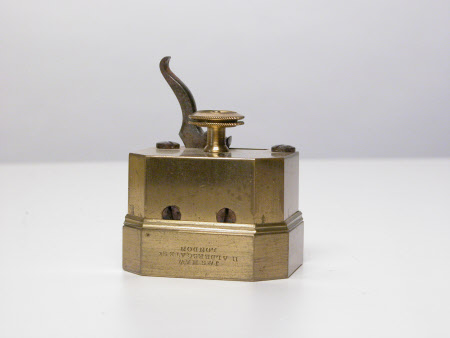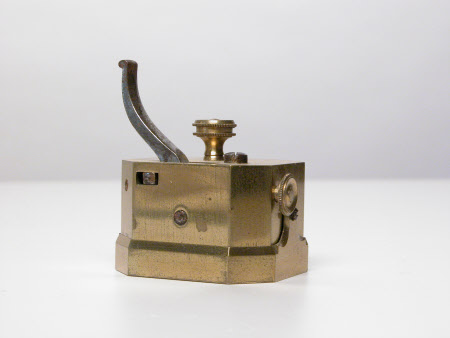This month we’re following a bit of a gruesome path so take this as a warning for the squeamish amongst you!
These curious little brass instruments (a little clue there) are kept in Top Royal. They look harmless enough, don’t they?

Any guesses on this very Victorian cure (another clue for you!) It’s a blood letting instrument! The ones in Charles Wade’s collections are known as scarificators, these made several cuts in the flesh at the same time. Jenny, our House Steward, has written about the fascinating but equally bizarre practice of blood letting. Here’s what she found out about the subject.
Does anybody have any ailments they would like me to treat? I am all out of leeches but I have some instruments of blood letting I could use. This ancient practice, also known as Phlebotomy from the Greek for vein-cutting, is used in conjunction with the four humor theory of Galen (the four humors being blood, yellow bile, black bile and phlegm). A person became unwell when the 4 humors were out of balance. Blood letting was viewed as an all-embracing cure, but was not to be done when the moon was on the wane, or during a south wind.
The lancet is the instrument used for scoring the flesh to release the blood. Each blade is protected in ivory or tortoise-shell and the blade is double sided with a sharp point.
A scarificator is an instrument that makes several incisions at the same time. A small brass box holds four to twelve razor-sharp, curved blades that are released by a trigger. The blades flash out to give a depth of cut governed by a turn-screw. Most scarificators are 19th century, but were still sold up to 1900.
The cupping glass is a small, glass bell-jar, which is placed over the wound caused by the lancet or scarificator to draw out and to collect the blood. The ability to draw the blood is obtained by heating the glass and applying it to the skin. On cooling a vacuum is produced, which readily sucks the blood from the wound.

Plain brass blood letting instrument engraved ‘W Pepys London’
All we can say is avoid visiting Snowshill if you’re feeling a bit under the weather when the moon is on the wane or during a south wind!
Thanks for the early warning! I still hope to see you all on Thursday. Mike